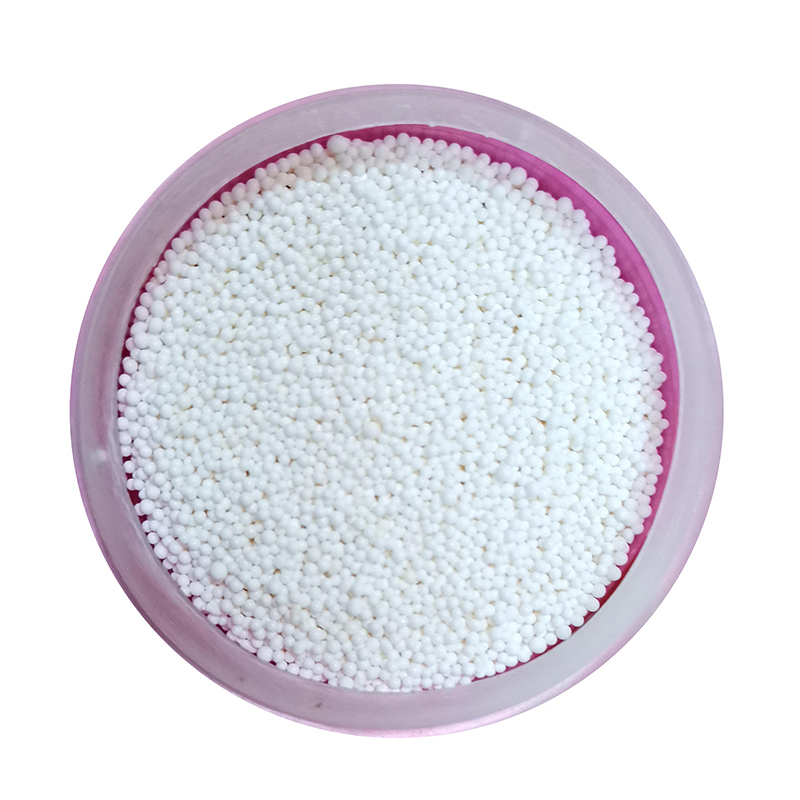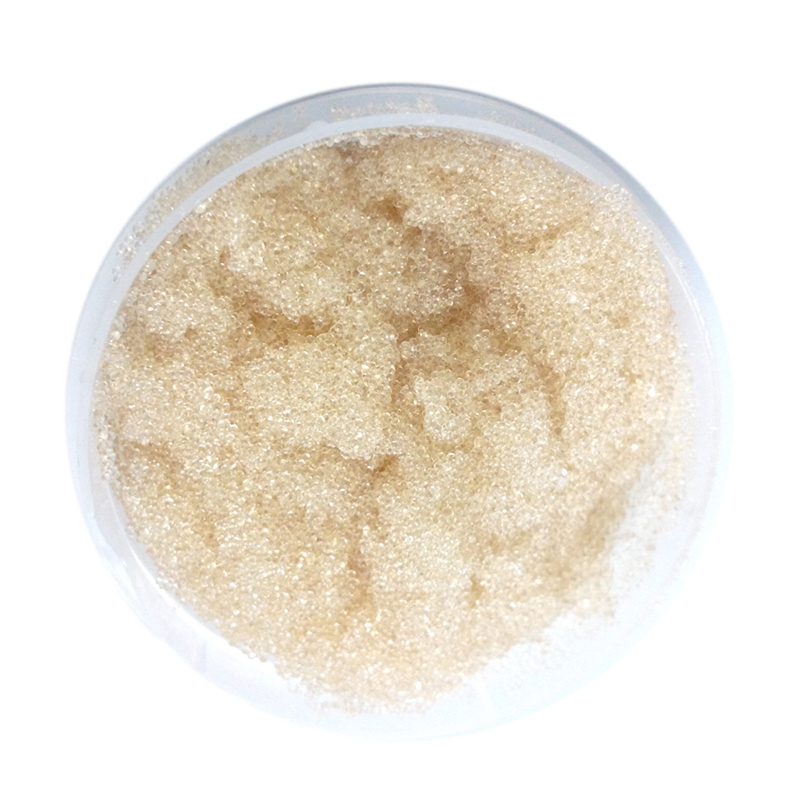
Wholesale China Softening Resin Company Factories - Strong acid cation exchange resin – Dongli
Wholesale China Softening Resin Company Factories - Strong acid cation exchange resin – Dongli
Wholesale China Softening Resin Company Factories - Strong acid cation exchange resin – Dongli Detail:
Strong Acid Cation Resins
| Resins | Polymer Matrix Structure | Whole Beads | FunctionGroup | Ionic Form | Total Exchange Capacity (meq/ml in Na+ ) | Moisture Content as Na+ | Particle Size mm | SwellingH→Na Max. | Shipping Weight g/L |
| GC104 | Gel Poly-styrene with DVB | 95% | R-SO3 | Na+/H+ | 1.50 | 56-62% | 0.3-1.2 |
10.0% |
800 |
| GC107 | Gel Poly-styrene with DVB | 95% | R-SO3 | Na+/H+ | 1.80 | 48-52% | 0.3-1.2 |
10.0% |
800 |
| GC107B | Gel Poly-styrene with DVB | 95% | R-SO3 | Na+/H+ | 1.90 | 45-50% | 0.3-1.2 |
10.0% |
800 |
| GC108 | Gel Poly-styrene with DVB | 95% | R-SO3 | Na+/H+ | 2.00 | 45-59% | 0.3-1.2 |
8.0% |
820 |
| GC109 | Gel Poly-styrene with DVB | 95% | R-SO3 | Na+/H+ | 2.10 | 40-45% | 0.3-1.2 |
7.0% |
830 |
| GC110 | Gel Poly-styrene with DVB | 95% | R-SO3 | Na+/H+ | 2.20 | 38-43% | 0.3-1.2 |
6.0% |
840 |
| GC116 | Gel Poly-styrene with DVB | 95% | R-SO3 | Na+/H+ | 2.40 | 38-38% | 0.3-1.2 |
5.0% |
850 |
| MC001 | Macroporous Poly-styrene with DVB | 95% | R-SO3 | Na+/H+ | 1.80 | 48-52% | 0.3-1.2 |
5.0% |
800 |
| MC002 | Macroporous Poly-styrene with DVB | 95% | R-SO3 | Na+/H+ | 2.00 | 45-50% | 0.3-1.2 |
5.0% |
800 |
| MC003 | Macroporous Poly-styrene with DVB | 95% | R-SO3 | Na+/H+ | 2.30 | 40-45% | 0.3-1.2 |
5.0% |
800 |
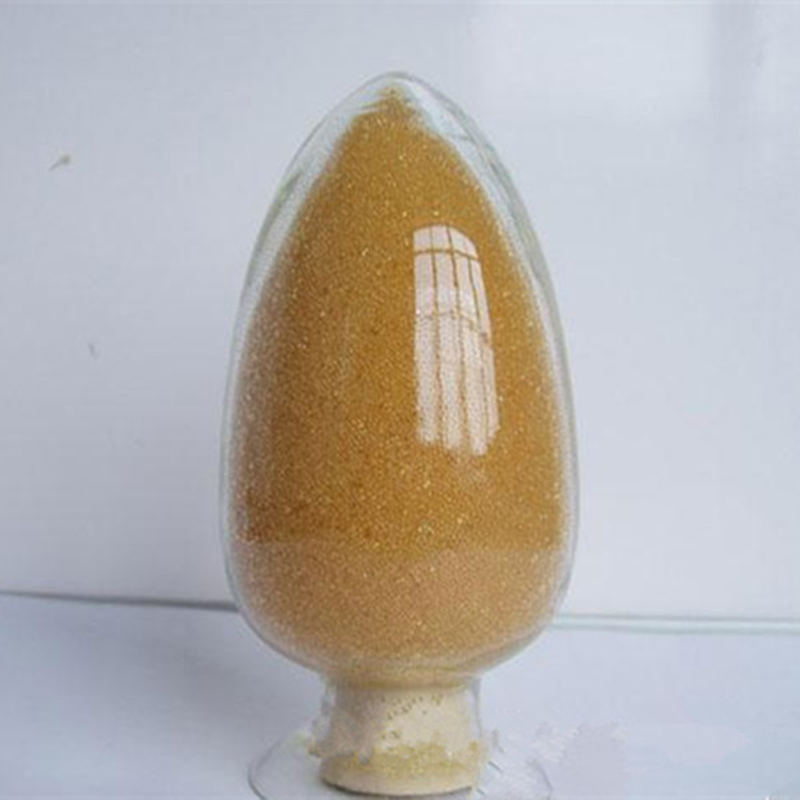
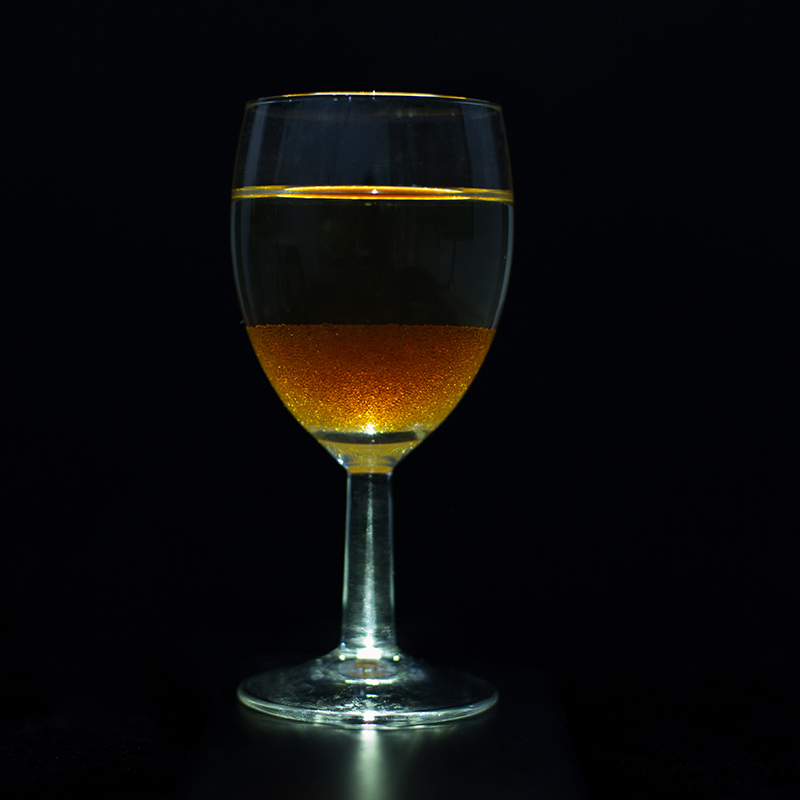
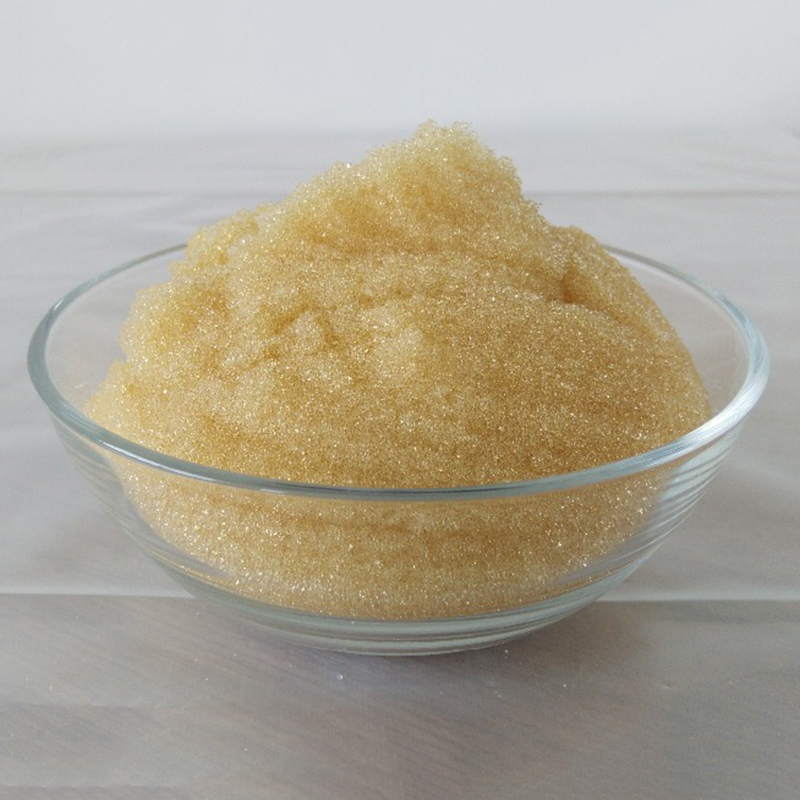
Strong Acid Cation
Strong acid exchange resin is a kind of cation exchange resin with sulfonic acid group (- SO3H) as the main exchange group, which can be reused.
The use of ordinary mineral acids is the same. The type of softened water resin is strong acid ion exchange resin. The special catalyst type resin must be used, because it is also related to the influence of hydrogen ion release rate, pore size and crosslinking degree on the reaction.
In industrial application, the advantages of ion exchange resin are large treatment capacity, wide decolorization range, high decolorization capacity, removal of various ions, repeated regeneration, long service life and low operation cost (although the cost of one-time investment is large). A variety of new technologies based on ion exchange resin, such as chromatographic separation, ion exclusion, electrodialysis, etc., have their own unique functions and can carry out various special work, which is difficult to do by other methods. The development and application of ion exchange technology is still developing rapidly.
Note
1. Ion exchange resin contains a certain amount of water and should not be stored in the open air. During storage and transportation, it should be kept moist to avoid air drying and dehydration, resulting in broken resin. If the resin is dehydrated during storage, it should be soaked in concentrated salt water (10%) and then diluted gradually. It should not be directly put into water to avoid rapid expansion and breakage of resin.
2. During storage and transportation in winter, the temperature should be kept at 5-40 ℃ to avoid supercooling or overheating, which will affect the quality. If there is no thermal insulation equipment in winter, the resin can be stored in salt water, and the concentration of salt water can be determined according to the temperature.
3. The industrial products of ion exchange resin often contain a small amount of low polymer and non reactive monomer, as well as inorganic impurities such as iron, lead and copper. When the resin is in contact with water, acid, alkali or other solutions, the above substances will be transferred into the solution, affecting the quality of the effluent. Therefore, the new resin must be pretreated before use. Generally, the resin is fully expanded with water, Then, the inorganic impurities (mainly iron compounds) can be removed by 4-5% dilute hydrochloric acid, and the organic impurities can be removed by 2-4% dilute sodium hydroxide solution. If it is used in pharmaceutical preparation, it must be soaked in ethanol.
Product detail pictures:
Related Product Guide:
Along with the "Client-Oriented" small business philosophy, a rigorous high-quality handle system, highly developed producing machines and a powerful R&D group, we always supply high-quality products and solutions, fantastic services and aggressive costs for Wholesale China Softening Resin Company Factories - Strong acid cation exchange resin – Dongli , The product will supply to all over the world, such as: Malaysia, Bangladesh, Jamaica, All the imported machines effectively control and guarantee the machining precision for the products. Besides, we have a group of high-quality management personnels and professionals, who make the high-quality products and have the ability to develop new products to expand our market home and abroad. We sincerely expect customers come for a blooming business for both of us.
We are old friends, the company's product quality has been always very good and this time the price is also very cheap.

